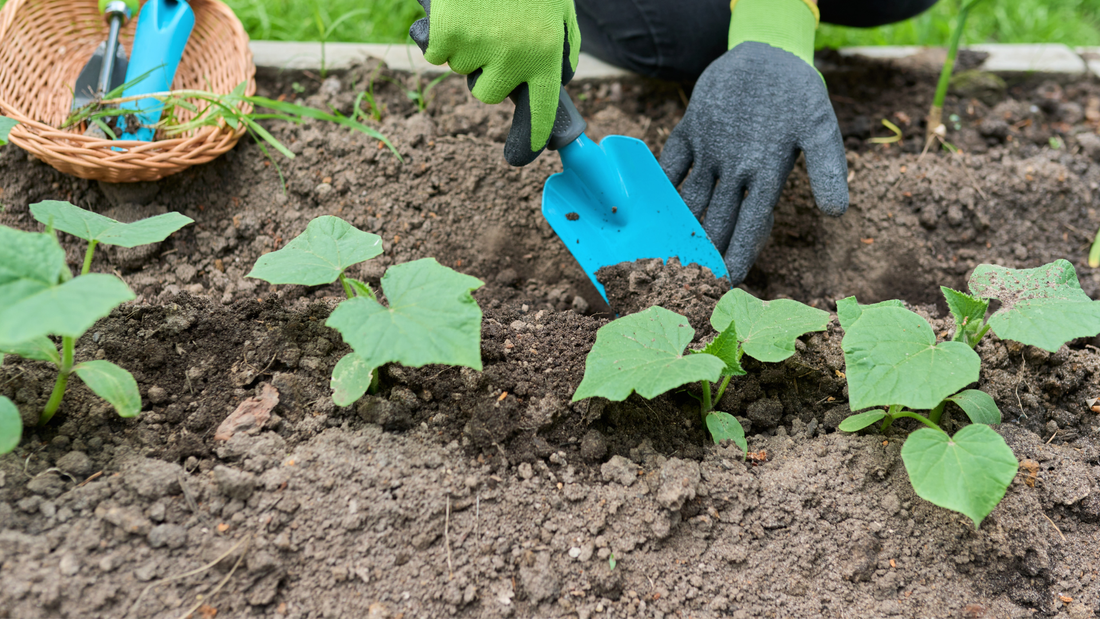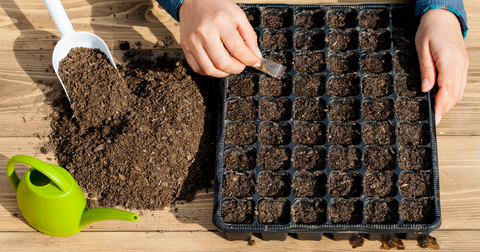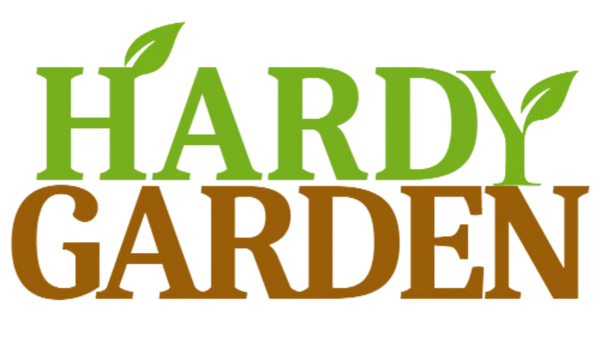
What Every Gardener Should Know About Planting in Spring
As the winter chill gradually fades away and the days start to get longer, the anticipation of spring takes root in the hearts of gardeners. Spring is a season of rebirth and renewal, and for garden enthusiasts, it marks the perfect time to get their hands dirty and usher in a burst of color and vitality to their outdoor spaces.
In this comprehensive guide, we will delve into the essential knowledge that every gardener should possess when it comes to planting in spring. From understanding hardiness zones to selecting the right vegetables, herbs, fruits, and flowers, let's embark on a journey to create a flourishing spring garden.
Understanding Hardiness Zones
Before diving into the exciting world of spring planting, it's crucial to familiarize yourself with your region's growing zone. Hardiness zones are geographical areas categorized based on the average annual minimum temperature. Knowing your hardiness zone helps you choose plants that are well-suited to your specific climate, ensuring a higher chance of success in your gardening endeavors.
Each zone has a unique set of temperature ranges, and plants are categorized based on their ability to survive these conditions. The United States Department of Agriculture (USDA) Hardiness Zone Map is a valuable resource for gardeners in the U.S. to determine their specific hardiness zone.

Spring Cleaning
Before you start planting, spring garden cleaning is vital to get your garden ready for the growing season. As winter bids goodbye, it's time to clear away debris, fallen leaves, and any remnants of frost. Start by raking and tidying up flower beds, removing dead plants, and pruning shrubs and trees to encourage healthy growth. You can put all the trimmings in the compost pile. Don't forget to weed thoroughly, as these unwanted guests can compete for nutrients with your precious plants.
Check and clean your gardening tools, ensuring they are ready for action. This regular maintenance and cleanup not only enhances the aesthetic appeal of your garden but also sets the stage for a fresh, vibrant, and well-organized space where your plants can flourish throughout the spring and beyond.
Selecting the Right Plants for Spring Garden
One of the joys of gardening is the opportunity to cultivate a variety of fresh, homegrown vegetables. Choosing the right vegetables that thrive in local soil temperatures is essential for a healthy garden and bountiful harvest.
Spring Vegetables
Opt for cool-season vegetables like spinach, kale, and Swiss chard. You can directly sow peas and other legumes. Additionally root veggies like sweet potatoes, carrots, potatoes and radishes can be planted into a cool soil. These vegetables flourish in the mild temperatures of spring, providing you with an early and delicious yield.
You can start warm season vegetables like tomatoes, peppers, and eggplants indoors. Transplant them outdoors in warm soil and make sure the threat of frost has passed for a jumpstart on the growing season.

Herbs Perfect for Spring Planting
Basil, chives, cilantro, dill, and mint are excellent choices for spring planting. These herbs love the springtime conditions and make delightful additions to a wide range of dishes.
Berries for Abundant Harvests
For compact gardens, consider planting strawberries, blueberries, or raspberries. These berries are prone to root rot, so they do best well in a raised bed with rich soil that drains well. These berries are not only delicious but also well-suited for container gardening.
Early Bloomers and Perennials
Tulips, daffodils, and crocuses are classic choices for early blooms. Plant these bulbs in the fall for a burst of color as soon as the weather warms up. Consider incorporating perennials like peonies, irises, and daylilies for enduring beauty. These plants return year after year, reducing the need for frequent replanting.
How to Sow Seeds in Early Spring
Sowing seeds in spring is a delightful way to kickstart your spring garden for a successful planting experience. Begin by visiting reputable local garden centers to check their seed catalogs ensuring they are well-suited for your region's climate and growing conditions. Visit your local garden centers for advice on the best times to sow specific seeds in your area. Some seeds can be directly sown or planted right into your garden soil, while others prefer to get a jump on the season indoors.
For successful early spring gardening, start your seeds indoors to give them a head start before transplanting. Starting seeds indoors ensures a controlled environment, kickstarting the germination process. As the weather warms, move your seedlings in raised beds for optimal growth and a bountiful harvest. For best results harden your seedlings by exposing them to the outdoors by leaving them outside for a while for a few days before transplanting them.

For direct sowing, prepare a fertile soil and ensure the soil temperature is workable. Create furrows or rows in the garden soil, plant your seeds by following the spacing guidelines on the seed packets. For seeds that require a longer growing season, such as tomatoes or peppers, starting them indoors before the last frost and then transplanting them outdoors can give them a head start. Sow beans and peas as directly as they they tend to dislike transplanting.
Planting Your Garden Beds in Spring
While the arrival of spring is exhilarating, it's essential to time your planting activities appropriately. Understanding the last frost date in your area is crucial for safeguarding tender plants from unexpected cold snaps.
Local gardening resources and online tools can help you determine the average date of the last frost in your region. Planting too early can expose your plants to frost damage, so exercising patience is key.
Transplanting seedlings in spring and summer is crucial in gardening, ensuring young plants have the space and nutrients they need to thrive. Here's a guide on when and how to transplant seedlings:
When to Transplant Seedlings:
Size and Development: Wait until your seedlings have developed their first true leaves and are sturdy enough to handle transplanting. This is typically a few days to several weeks, after germination.
Weather Conditions: Choose a mild, overcast day or late afternoon for transplanting. This helps reduce plant stress as they adjust to their new environment.
Frost Risk: Be cautious of any lingering frost in your area in late spring. Transplant after the last expected frost date to avoid damage to tender seedlings. Remember that most garden plants don't tolerate colder temperatures. It is better to delay planting time when the soil surface is covered with frost.
How to Transplant Seedlings:
Prepare the Soil: Choose a well-draining and nutrient-rich soil mix. Ensure the soil is moist but not soggy. You can add one inch of compost directly to the top of the raised bed and plant directly in it, or dig it deeper into your garden when you till.

Containers: If planting into individual pots, ensure they have drainage holes. Beets are perfect for containers since they only need a little space to grow. Soak the beet seeds in water to soften the shells before planting them half an inch in the ground. When planting into a garden bed, ensure the soil or raised bed is well-prepared.
Watering: Use watering can to water the seedlings a few hours before transplanting to help the soil hold together and reduce shock.
Gentle Removal: Carefully remove seedlings from their original containers. If they are in a seed tray, gently pop them out, holding them by the leaves to avoid damaging the delicate stems.
Digging Holes: Dig holes in the soil that are slightly larger than the root ball of each seedling. Space the holes to plant seeds according to the recommended distance for each plant type.
Transplanting: When planting follow spacing recommendations for each type of plant to ensure proper airflow and sunlight. Place each seedling into its hole, ensuring it sits at the same depth as in the original container. Pack the soil around the base to provide stability. Remember to avoid working with wet soil; wait until the soil is moist to slightly dry.
Protect from Sun: If the weather is sunny and hot, provide shade to the newly transplanted seedlings for a few days to help them acclimate to full sun. If possible, harden the plants by exposing them to outdoors conditions daily for a few days before transplanting.

Conclusion
In conclusion, diving into spring planting is like launching nature's own spectacular fireworks display in your garden. Remember, it's all about the three W's: Water, Weed, and Watch. Keep your plants hydrated, banish those pesky weeds, and then sit back and enjoy the show!
Spring gardening is a dance with Mother Nature, and with a sprinkle of love, a dash of patience, and a dollop of sunshine, your garden will burst into a symphony of colors and fragrances. Happy planting!
